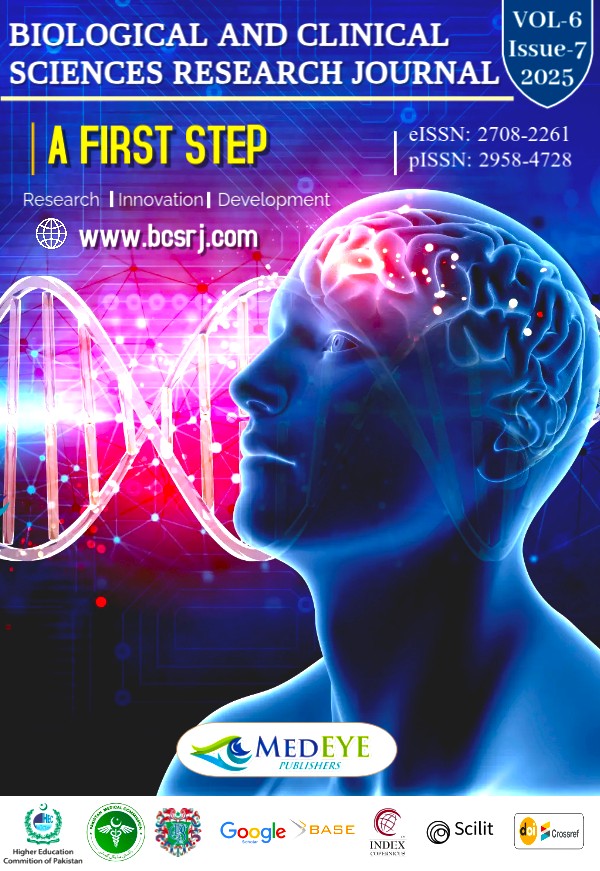Combined Laparoscopic and Hysteroscopic Management of Cesarean Scar Pregnancy: A Case Series
DOI:
https://doi.org/10.54112/bcsrj.v6i7.1904Keywords:
Cesarean Section, Hysteroscopy, Laparoscopy, Pregnancy, Ectopic, Uterine DiseasesAbstract
Cesarean scar pregnancy (CSP) is an uncommon form of ectopic implantation associated with risks of severe hemorrhage, uterine rupture, and loss of fertility. With rising cesarean delivery rates, CSP is increasingly encountered, yet optimal management remains debated. A combined minimally invasive strategy—using hysteroscopic guidance for precise intrauterine resection and laparoscopic access for hemostasis and layered scar repair may enhance safety while preserving reproductive potential. Objective: To assess the safety and efficacy of a combined laparoscopic and hysteroscopic approach in managing cesarean scar ectopic pregnancies, focusing on surgical outcomes and complications in a series of eight cases. Methods: Eight patients with a cesarean scar pregnancy (CSP) diagnosed by transvaginal ultrasound were managed at our institution. Initial management (systemic methotrexate and/or ultrasound-guided intragestational injection in selected cases) was followed by a combined laparoscopy and hysteroscopy to remove gestational tissue and repair the uterine scar. Intraoperative blood loss, need for conversion to open surgery or additional interventions, and postoperative recovery were recorded. Results: All eight patients were successfully treated without conversion to laparotomy. Seven patients underwent fertility-preserving laparoscopic-hysteroscopic resection of the scar pregnancy, and one patient with life-threatening hemorrhage and completed childbearing underwent a laparoscopic hysterectomy. No severe intraoperative complications occurred; notably, none of the patients experienced uncontrolled hemorrhage, and there was no need for blood transfusion or reoperation in this series. Postoperative recovery was uneventful in all cases, with rapid decline of serum β-hCG and preservation of the uterus (in those desiring future fertility). Conclusion: A combined laparoscopic and hysteroscopic approach is a safe and effective therapeutic option for cesarean scar pregnancies. This minimally invasive technique allowed precise removal of the gestational sac and repair of the uterine defect with minimal blood loss and avoidance of open surgery. Our case series supports emerging evidence that operative resection (via laparoscopy with hysteroscopic guidance) offers high success rates with low morbidity, making it a valuable alternative to more invasive or medically-only management. Further larger studies are warranted to confirm these outcomes and guide standardized management for CSP.
Downloads
References
Hameed MSS, Wright A, Chern BSM. Cesarean scar pregnancy: current understanding and treatment, including role of minimally invasive surgical techniques. Gynecol Minim Invasive Ther. 2023;12(2):64–71. https://doi.org/10.4103/gmit.gmit_116_22
Marzec MT, Łakoma A, Marzec WZ, Choiński M, Wasiewicz-Ciach P, Kuczyński P, et al. Systematic review on cesarean scar pregnancy (CSP) diagnosis, treatment, and management. Quality in Sport. 2024;20. https://doi.org/10.12775/QS.2024.20.53983
Knapman BL, Forgues MA-S, Abbott JA, Maheux-Lacroix S. Other treatments for CSP. Best Pract Res Clin Obstet Gynaecol. 2023;90:102367. https://doi.org/10.1016/j.bpobgyn.2023.102367
Vitale SG, Della Corte L, Ciebiera M, Carugno J, Riemma G, Lasmar RB, et al. Hysteroscopic endometrial ablation: from indications to instrumentation and techniques—a call to action. Diagnostics (Basel). 2023;13(3):339. https://doi.org/10.3390/diagnostics13030339
Maheux-Lacroix S, Li F, Bujold E, Nesbitt-Hawes E, Deans R, Abbott J. Cesarean scar pregnancies: a systematic review of treatment options. J Minim Invasive Gynecol. 2017;24(6):915–25. https://doi.org/10.1016/j.jmig.2017.05.019
Fu P, Sun H, Zhang L, Liu R. Efficacy and safety of treatment modalities for cesarean scar pregnancy: a systematic review and network meta-analysis. Am J Obstet Gynecol MFM. 2024;6(8):101328. https://doi.org/10.1016/j.ajogmf.2024.101328.
Morente LS, León AIG, Reina MPE, Herrero JRA, Mesa EG, López JSJ. Cesarean scar ectopic pregnancy—case series: treatment decision algorithm and success with medical treatment. Medicina. 2021;57(4):362. https://doi.org/10.3390/medicina57040362
Society for Maternal-Fetal Medicine (SMFM); Miller R, Gyamfi-Bannerman C; Publications Committee. Society for Maternal-Fetal Medicine consult series #63: cesarean scar ectopic pregnancy. Am J Obstet Gynecol. 2022;227(3):B9–B20. https://doi.org/10.1016/j.ajog.2022.06.024
Shen F, Lv H, Wang L, Zhao R, Tong M, Lee AC-L, et al. A comparison of treatment options for type 1 and type 2 caesarean scar pregnancy: a retrospective case series study. Front Med (Lausanne). 2021;8:671035. https://doi.org/10.3389/fmed.2021.671035 .
Silva B, Pinto PV, Costa MA. Cesarean scar pregnancy: a systematic review on expectant management. Eur J Obstet Gynecol Reprod Biol. 2023;288:36–43. https://doi.org/10.1016/j.ejogrb.2023.06.030.
Downloads
Published
How to Cite
Issue
Section
License
Copyright (c) 2025 Arooba Rahim, Javaria Siraj, Isma Khalid, Shehnaz Zulfiqar Bhatti, Mian Adnan Aslam Javaid

This work is licensed under a Creative Commons Attribution-NonCommercial 4.0 International License.








